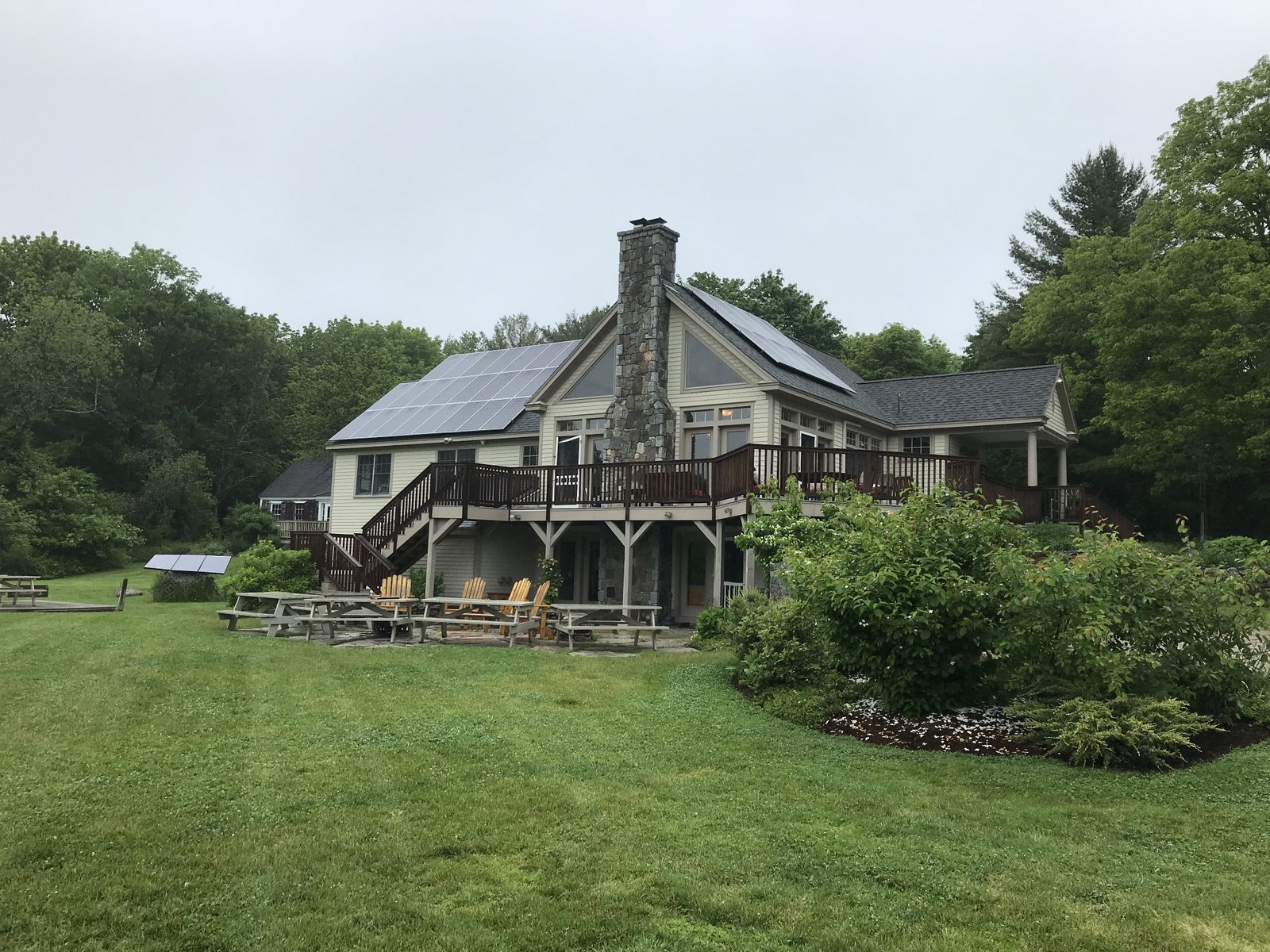Jon Dykstra Explains the KCT Solar Projects
By Shelley Wigglesworth
KCT Board Member Jon Dykstra was born and raised in upstate New York. His ties to Kennebunkport date back decades as his family owned a home on Goose Rocks Beach from 1960 to 2003. “My wife and I retired to Kennebunkport in 2015. I am a geologist; I received my PhD in Exploration Geology from Dartmouth College in 1978 and have worked as an exploration geologist and research scientist for a variety of geologic consulting and satellite remote sensing firms,” he said.
Dykstra is heavily involved on the Trust’s ongoing sustainable energy mission, including the Trust’s solar projects, which began with solar panels being installed at Trust locations in June of 2019. He explained “Sustainability is at the core of KCT’s charter. A principal focus of KCT is to preserve and maintain our local natural environment so that future generations will have the opportunity to both enjoy and bond with these special lands and coastal islands. Climate change, and its inevitable effect on sea level, is a looming threat to that commitment. KCT has chosen to work towards becoming carbon neutral across all our holdings. With the installation of thirty-three solar panels on our HQ building we have reached over two-thirds of the way to that goal.”
Jon Dykstra, visionary of the KCT Solar Project
He explained how the solar project came to fruition. “The KCT board made the commitment to go-green during the winter of 2019. Requests for designs and proposals were sent to several solar providers. Maine Solar Solutions was chosen for the project (https://info.mainesolarsolutions.com) We installed thirty-three solar panels and a 36,000 BTU mini-split heat pump. The heat pump supplies much needed AC cooling to our gathering space and off-sets the cost (and carbon) generated by our, now supplemental, propane baseboard heating system.”
The current solar panels are 370 Watt, 72 Cell, Monocrystalline PV modules. Each panel is approx. 77 x 39 x 1.5 inches (height x width x thickness) and weighs approx. fifty pounds. “We have twenty-three panels on our SSW facing roof and ten panels on the SE facing roof. The DC (direct current) power of each panel is collected and passed through an ‘inverter’ that converts the power to AC (alternating current). The solar generated electricity is simultaneously available to KCT and to the larger CMP grid. On a given day, if KCT uses X amount of electricity, and we generate an amount equal to X+Y, KCT is credited for the Y amount. This extra generated amount can then cover nighttime use or other times when/if demand is greater than solar production. However, if KCT only produced X-Z, then KCT would be billed by CMP for the missing amount (Z).” Dykstra said. He added “At this point in time, the solar panels on the HQ building more than covers the use at HQ but falls short of covering KCT’s total consumption. This is largely due to consumption at the Trust’s historical buildings on the Goat Island Lighthouse property.”
Plans to address the total energy consumption of the Trust buildings, specifically the historical buildings at the Goat Island Lighthouse are currently in the works. “The Trust’s intent is to establish sufficient solar energy, either directly on the island or within our pooled power grid, to offset Goat Island’s consumption within the next few years,” Dykstra said.
To date, the Trust solar panels have generated over 37.57-million-watt hours (MWh) since June of 2019. According to Maine Solar Solutions App, this is equivalent to 58,182 pounds (over twenty-nine tons) of carbon dioxide emissions saved.
Dykstra summarized the benefits of the solar project, and the very few obstacles faced, which have been easily addressed. “As long as you have a clear view of the sky (not blocked by trees, buildings, etc.) and suitable orientation (best between SE to SW), solar is an excellent source of alternative energy. As opposed to wind, it’s lack of moving parts and low visual profile are definite plusses. The only two obstacles we faced, were having sufficient roof area – limited by roof orientation and the location of a standpipe. Both were easily addressed by splitting the array over two roof sections and moving the standpipe to the north-facing roof line.”
He concluded “At our current generation and consumption rates we are on track to pay for the installation in less than 10 years. In terms of climate, we have already prevented the emissions of over twenty-nine tons of carbon dioxide gas.”
The KCT is currently working with The Climate Initiative (TCI - https://www.theclimateinitiative.org) and the University of New England to study which alternative source(s) would be most effective in offsetting the KCT power consumption at the Goat Island Lighthouse property, as well as assessing solar options for all new KCT property development activities.
FMI on the KCT’s solar arrays, Dykstra may be reached at: dykstra.jon@gmail.com



